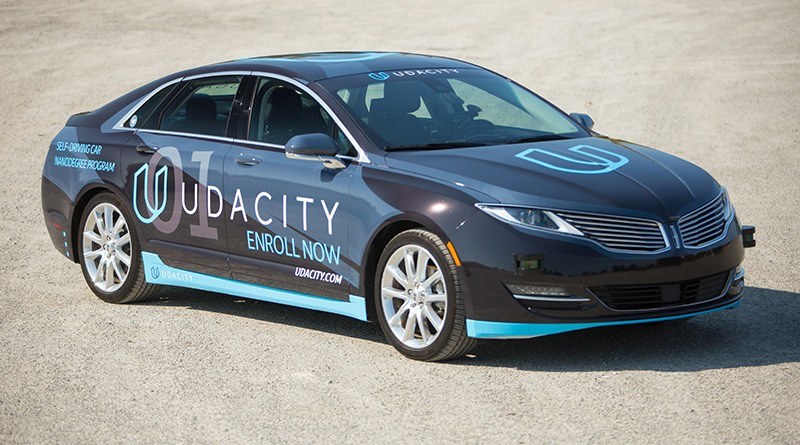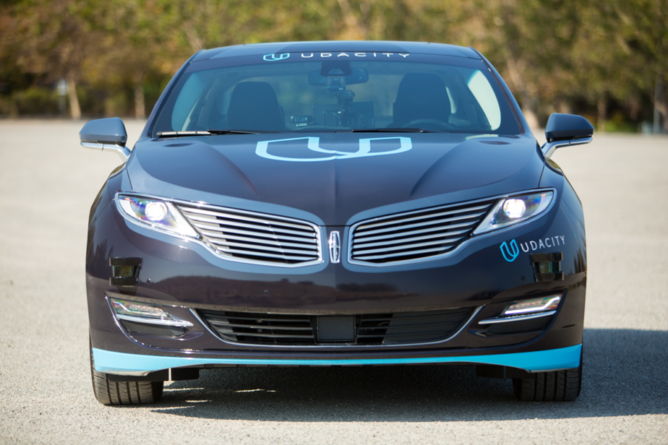This is the project repo for the final project of the Udacity Self-Driving Car Nanodegree: Programming a Real Self-Driving Car by the team Drive Layer. We built ROS nodes to implement core functionality of the autonomous vehicle system, including traffic light detection, control, and waypoint following.
- Ahmed Mahmoud
a.mostfa@gmail.com - Ahmed Zaitoon
ahmed.zaitoon91@gmail.com - Mohamed Alaa Eldin
mohammed.alaa92@gmail.com
The following is a system architecture diagram showing the ROS nodes and topics used in the project.
 Note : For this project, the obstacle detection node is not implemented.
Note : For this project, the obstacle detection node is not implemented.
This subsystem is responsible for perceiving the environment around the vehicle and and publishing observations to other subsystems such as determining the state of upcoming traffic lights and sending their status to other subsystems.
This subsystem plans a trajectory for the vehicle to follow by publishing a fixed number of waypoints ahead of the vehicle with the correct target velocities depending on the vehicle's position along with the state of upcoming traffic lights.
This subsystem publishes the control commands for the vehicle in terms of steering , throttle and brake commands based on the list of waypoints.
We have implemented the following nodes :
It's implemented in tl_detector.py. This node takes in data from the /image_color, /current_pose, and /base_waypoints topics and publishes the locations to stop for red traffic lights to the /traffic_waypoint topic.The /current_pose topic provides the vehicle's current position, and /base_waypoints provides a complete list of waypoints the car will be following.
It's implemented in waypoint_updater.py. The purpose of this node is to update the target velocity property of each waypoint based on the vehicle's current position and traffic lights detection data. This node will subscribe to the /base_waypoints, /current_pose, /obstacle_waypoint, and /traffic_waypoint topics, and publish a list of waypoints ahead of the car with target velocities to the /final_waypoints topic.
It's implemented in dbw_node.py.Carla is equipped with a drive-by-wire (dbw) system, meaning the throttle, brake, and steering have electronic control. This node subscribes to the /current_velocity topic along with the /twist_cmd topic to receive target linear and angular velocities. Additionally, It will subscribe to /vehicle/dbw_enabled, which indicates if the car is under drive-by-wire or driver control. This node will publish throttle, brake, and steering commands to the /vehicle/throttle_cmd, /vehicle/brake_cmd, and /vehicle/steering_cmd topics.dbw_node.py is set up to publish steering, throttle, and brake commands at 50hz. The DBW system on Carla expects messages at this frequency, and will disengage (reverting control back to the driver) if control messages are published at less than 10hz. This is a safety feature on the car intended to return control to the driver if the software system crashes.
Please use one of the two installation options, either native or docker installation as suggested by Udacity.
-
Be sure that your workstation is running Ubuntu 16.04 Xenial Xerus or Ubuntu 14.04 Trusty Tahir. Ubuntu downloads can be found here.
-
If using a Virtual Machine to install Ubuntu, use the following configuration as minimum:
- 2 CPU
- 2 GB system memory
- 25 GB of free hard drive space
The Udacity provided virtual machine has ROS and Dataspeed DBW already installed, so you can skip the next two steps if you are using this.
-
Follow these instructions to install ROS
- ROS Kinetic if you have Ubuntu 16.04.
- ROS Indigo if you have Ubuntu 14.04.
-
- Use this option to install the SDK on a workstation that already has ROS installed: One Line SDK Install (binary)
-
Download the Udacity Simulator.
Build the docker container
docker build . -t capstoneRun the docker file
docker run -p 4567:4567 -v $PWD:/capstone -v /tmp/log:/root/.ros/ --rm -it capstoneTo set up port forwarding, please refer to the instructions from term 2
-
Clone the project repository
-
Install python dependencies
cd CarND-Capstone
pip install -r requirements.txt- Make and run styx
cd ros
catkin_make
source devel/setup.sh
roslaunch launch/styx.launch- Run the simulator
- Download training bag that was recorded on the Udacity self-driving car.
- Unzip the file
unzip traffic_light_bag_file.zip- Play the bag file
rosbag play -l traffic_light_bag_file/traffic_light_training.bag- Launch your project in site mode
cd CarND-Capstone/ros
roslaunch launch/site.launch- Confirm that traffic light detection works on real life images




